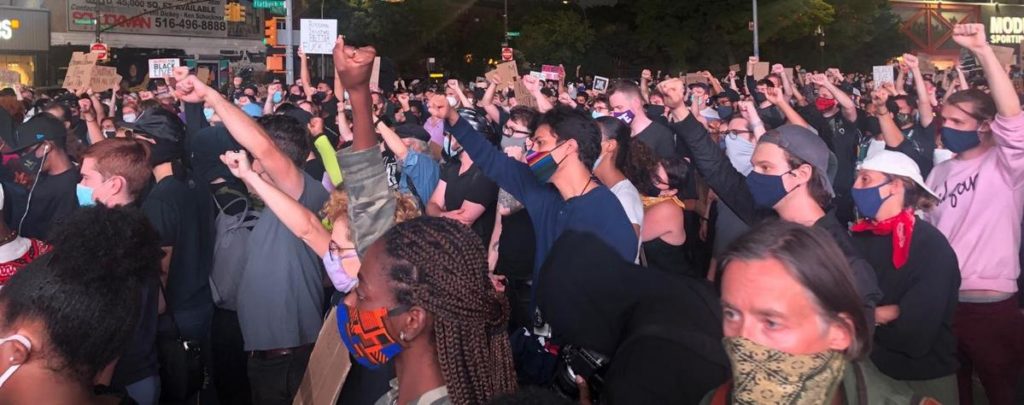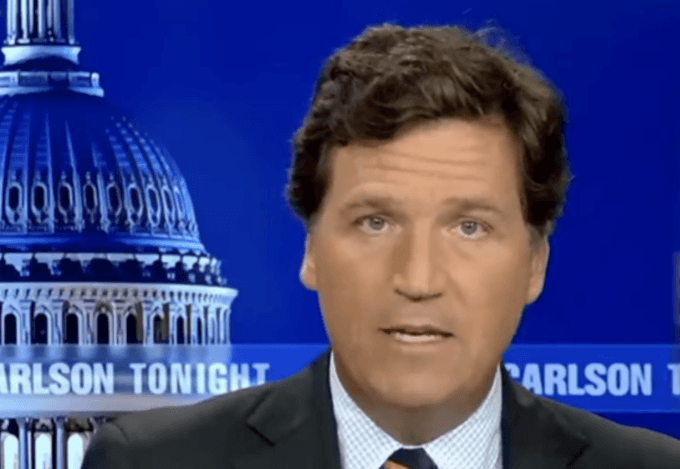
Thousands of New Yorkers took to the streets on Sep. 23 in response to the outrageous news that a grand jury had determined that none of Breonna Taylor’s killers would face any murder charges. Gathering in front of the Barclays Center in Brooklyn, activists gave impassioned speeches before marching into Manhattan.
Similar actions took place simultaneously and spontaneously around the nation as the uprising against racism and police violence surges once again.
NYC Protest Shuts Down Manhattan Bridge
Marching from Barclays towards Manhattan, activists chanted “No Justice, No Peace!” as a reminder to the police and the broader government that there would be no peace in Brooklyn without justice for Breonna Taylor in Louisville, KY.
In front of a crowd of more than 2,500 tightly-packed protestors surrounded by heavily armed police onlookers and squad cars, activists took turns speaking to the audience via loud speaker. Shermaine Laster explained that the nation was now at a “crossroads” and that a “multicultural, multinational generation is changing the course of history.”
A representative of The Legal Aid Society asked all protestors to take a knee in a show of solidarity with NFL players protesting the national anthem to draw attention to police brutality.
Following additional speeches, protestors marched down Flatbush Avenue toward Manhattan, eventually leading to a temporary shutdown of the Manhattan Bridge.

Breonna Taylor denied justice, Democrats crack down
Taylor, a 26-year-old Black woman from Louisville, KY, working as an emergency medical technician on the front lines of the coronavirus pandemic, was murdered on March 13 in her home by three unannounced officers. Despite Taylor’s being shot eight times while the officers executed a so-called no-knock warrant—a euphemism for a police raid—the nearly-blank incident report had “no” checked in the box next to “forced entry” and listed her injuries as “none.”
Kentucky Attorney General Daniel Cameron announced the grand jury decision. Of the three officers involved—Brett Hankison, Jonathan Mattingly, and Myles Cosgrove—only Hankison would see a charge. But outrageously, the grand jury decided Hankinson will not be charged with murdering Taylor but rather “wanton endangerment,” a Class D felony— the lowest possible class.
Cameron maintained that the shots were fired outside of Taylor’s apartment and additionally penetrated the neighbor’s wall, therefore “wantonly endangering” the public. Many have pointed out that the legal system has given more justice to these apartment walls than to Breonna Taylor herself.
For months, people around the country protested and took to social media to call for the arrest of Taylor’s killers on murder charges. It was only under popular pressure from an outraged nation, that even a bogus investigation ensued where a grand jury that would decide on whether criminal charges would be issued.
Officials knew well that mass protest would follow this unjust ruling. Two days before the decision, Louisville Metro Police Department issued a state of emergency, and Louisville Mayor Greg Fisher, a Democrat, issued a 72-hour curfew at 6:00 p.m. starting Sept 23. Louisville has been home to sustained mass protests since Taylor’s murder. Given these preemptive actions, and the countless killer cops that have walked free in the face of a national movement against racist police killings, many activists expected this ruling and denial of justice.
Kentucky’s Democratic Governor Andy Beshear announced that he was prepared to deploy the national guard in response to the decision. Democratic governors nationwide followed Kentucky’s lead, revealing the explosive, national nature of the decision. This comes as little surprise given that states which held mass protests earlier this summer were also led by Democratic governors: in Minnesota, where the murder of George Floyd fueled this year of mass rebellion; and in Wisconsin, where the police shooting of Jacob Blake sparked immediate protest.
In the streets ‘until there is a revolution‘
At the Breonna Taylor protest in Democrat-led New York City, long used to police crackdown on protests, no signs or chants promoted “Biden 2020” or encouraged protesters to “go out and vote.”
The people from Brooklyn to Louisville and beyond are growing increasingly aware of the fact that only mass mobilization and organizing will truly stamp out police brutality. They understand that the system itself is racist. A Brooklyn protester, when asked how long she would remain in the streets, responded, “until there’s a revolution.”



